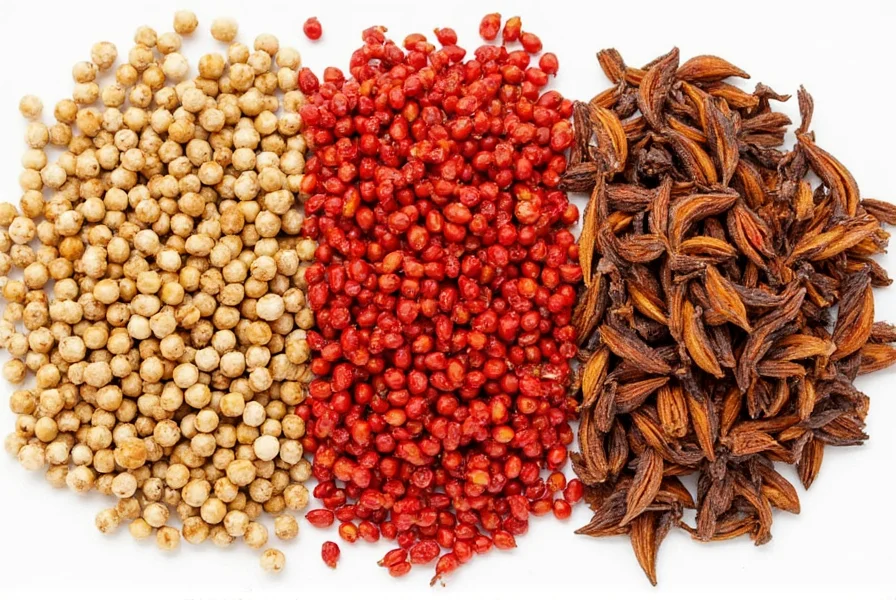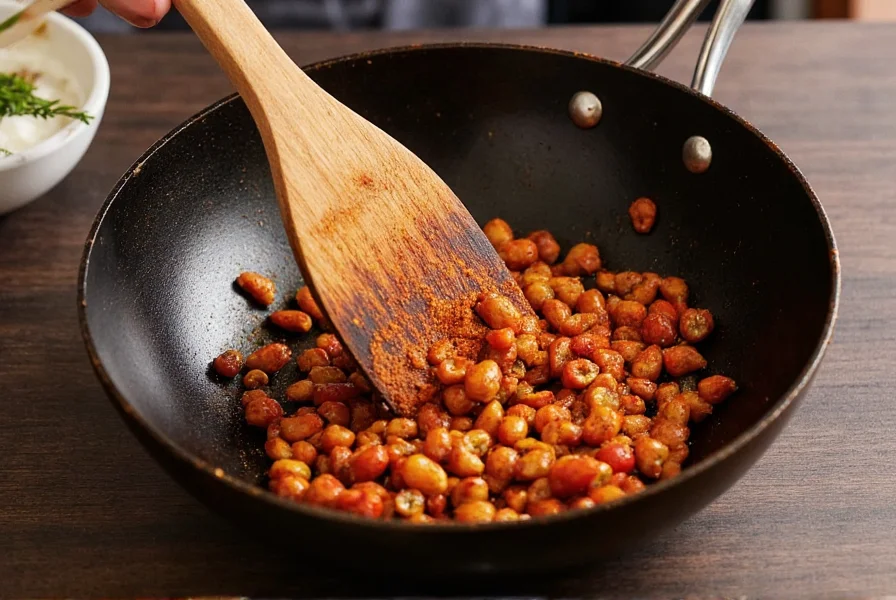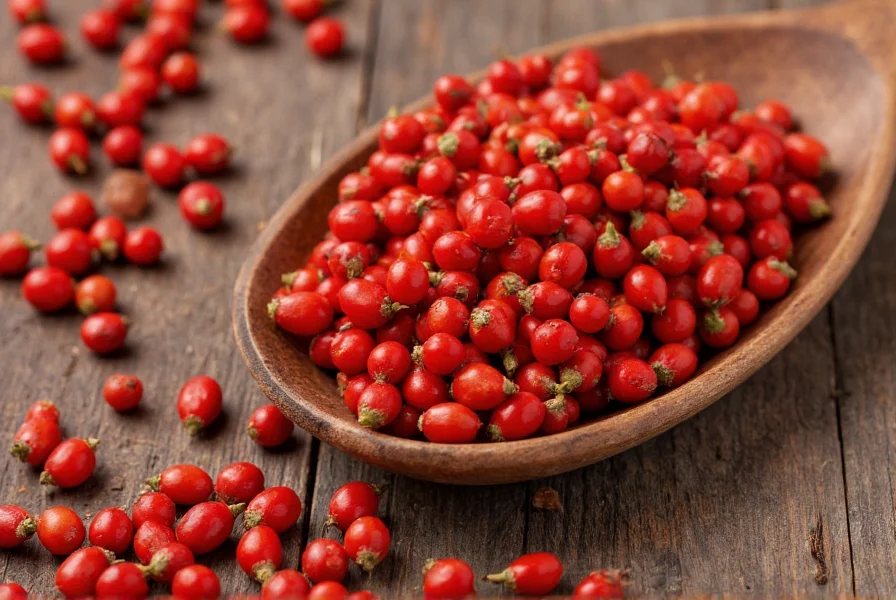Understanding what makes Szechuan pepper irreplaceable is key to finding suitable alternatives. Unlike regular black or white pepper, Szechuan pepper (from the Zanthoxylum genus, not true peppers) delivers a distinctive tingling, numbing sensation called má that's essential to authentic Sichuan cuisine. This unique characteristic comes from hydroxy-alpha sanshool, a compound that stimulates nerve endings differently than capsaicin in chili peppers.
Top Szechuan Pepper Substitutes Ranked by Effectiveness
When your recipe calls for Szechuan peppercorns and you're facing an empty spice rack, these alternatives offer varying degrees of success in replicating that signature mouthfeel and citrusy aroma:
- Tasmanian Pepperberry - Native to Australia, this berry delivers a similar tingling sensation with a more complex flavor profile including hints of eucalyptus and citrus. Use a 1:1 ratio as replacement.
- Sansho Pepper - Japanese alternative from the same botanical family as Szechuan pepper. Provides comparable numbing effect with less intensity. Substitute at 3:4 ratio (use 3/4 teaspoon sansho for every 1 teaspoon Szechuan pepper).
- Black Pepper + Star Anise Blend - For most home cooks, combining 1 part freshly ground black pepper with ½ part finely ground star anise creates the most accessible substitute. The star anise contributes the floral notes while black pepper provides heat.
- White Pepper + Lemon Zest - In creamy or light-colored dishes where dark specks would be undesirable, this combination offers mild numbing with citrus undertones.
| Substitute | Flavor Profile | Replacement Ratio | Best Used In |
|---|---|---|---|
| Tasmanian Pepperberry | Floral, citrus, mild numbing | 1:1 | Seafood dishes, sauces |
| Sansho Pepper | Milder numbing, citrus notes | 3:4 | Stir-fries, dry-fried dishes |
| Black Pepper + Star Anise | Peppery with subtle sweetness | 2:1 blend | Most general cooking applications |
| White Pepper + Lemon Zest | Mild heat, bright citrus | 1:1 with zest | Creamy sauces, light-colored dishes |
Regional Alternatives Based on Availability
Depending on your location, certain substitutes may be more accessible than others. In North America, specialty grocers often carry Tasmanian pepperberry as a premium alternative. European cooks might find sansho pepper more readily available through Japanese food suppliers. For those in regions where neither is accessible, the black pepper and star anise combination remains the most practical solution for creating Szechuan pepper substitute for authentic Chinese cooking.

What NOT to Use as Szechuan Pepper Replacements
Avoid these common misconceptions when seeking a Szechuan peppercorn substitute:
- Chili peppers alone - They provide heat but none of the characteristic numbing sensation
- Allspice - Despite some superficial flavor similarities, it lacks the tingling quality
- Pre-ground Szechuan pepper - If using actual Szechuan pepper, always grind fresh as the volatile compounds dissipate quickly
Practical Usage Tips for Szechuan Pepper Substitutes
When implementing these alternatives in your cooking, consider these professional techniques:
- Dry toast substitutes - Lightly toast sansho or Tasmanian pepperberry before grinding to enhance their aromatic compounds
- Infuse oils - Create a substitute-infused oil by gently heating your alternative with neutral oil for 10 minutes, then straining
- Layer flavors - For the black pepper/star anise blend, add the star anise early in cooking and black pepper near the end
- Adjust for dish type - Use more subtle substitutes like white pepper blends in delicate dishes, reserving stronger alternatives for robust recipes
When cooking with Szechuan pepper replacement ratios for home cooking, remember that the numbing sensation builds gradually. Start with less than you think you need, then adjust after 5-10 minutes as the dish cooks. This approach prevents overwhelming your palate with excessive tingling sensation.

Special Considerations for Authentic Sichuan Dishes
Certain iconic Sichuan dishes require more thoughtful substitution approaches:
- Kung Pao Chicken - Use sansho pepper for closest approximation of the mouth-numbing quality
- Dry-Fried Green Beans - The black pepper/star anise blend works particularly well here
- Mapo Tofu - Consider adding a tiny pinch of baking soda to your substitute blend to enhance the numbing effect
For those wondering what to use instead of Szechuan pepper in specific regional recipes, consult cookbooks focused on the particular cuisine you're preparing. Authentic Chinese cooking often uses Szechuan pepper in conjunction with other spices, so understanding the complete flavor profile helps determine the most appropriate substitute.
Frequently Asked Questions
Can I use regular black pepper as a Szechuan pepper substitute?
Black pepper alone cannot replicate Szechuan pepper's numbing sensation, but it's the foundation of the most accessible substitute. Combine 2 parts freshly ground black pepper with 1 part finely ground star anise for a reasonable approximation that works in most recipes requiring花椒.
How much substitute should I use compared to actual Szechuan pepper?
For sansho pepper, use 3/4 teaspoon for every 1 teaspoon of Szechuan pepper called for. With Tasmanian pepperberry, maintain a 1:1 ratio. For the black pepper and star anise blend, use equal parts of the combined mixture as you would Szechuan pepper. Always start with less than you think you need, as the numbing sensation intensifies during cooking.
Why doesn't chili pepper work as a Szechuan pepper replacement?
Chili peppers create heat through capsaicin, which affects different nerve receptors than the hydroxy-alpha sanshool in Szechuan pepper that creates the distinctive numbing sensation (má). While both provide sensory experiences, they're fundamentally different physiological responses - one is burning heat, the other is tingling numbness.
Can I make my own Szechuan pepper substitute blend in advance?
Yes, but with limitations. Pre-mixed black pepper and star anise blends can be stored for 2-3 weeks in an airtight container, though freshly ground provides superior flavor. Tasmanian pepperberry and sansho pepper should be ground immediately before use, as their volatile compounds degrade quickly. For best results with Szechuan pepper substitute for authentic Chinese cooking, prepare small batches as needed.
Is there a non-spicy alternative for those sensitive to numbing sensations?
For those seeking a Szechuan pepper replacement without the numbing effect, try using just star anise (1/4 teaspoon per serving) for the floral notes without tingling. Alternatively, a small amount of lemon zest combined with white pepper provides citrus notes with mild heat. These alternatives won't replicate authentic Sichuan cuisine but offer similar flavor dimensions without the characteristic mouthfeel.











 浙公网安备
33010002000092号
浙公网安备
33010002000092号 浙B2-20120091-4
浙B2-20120091-4